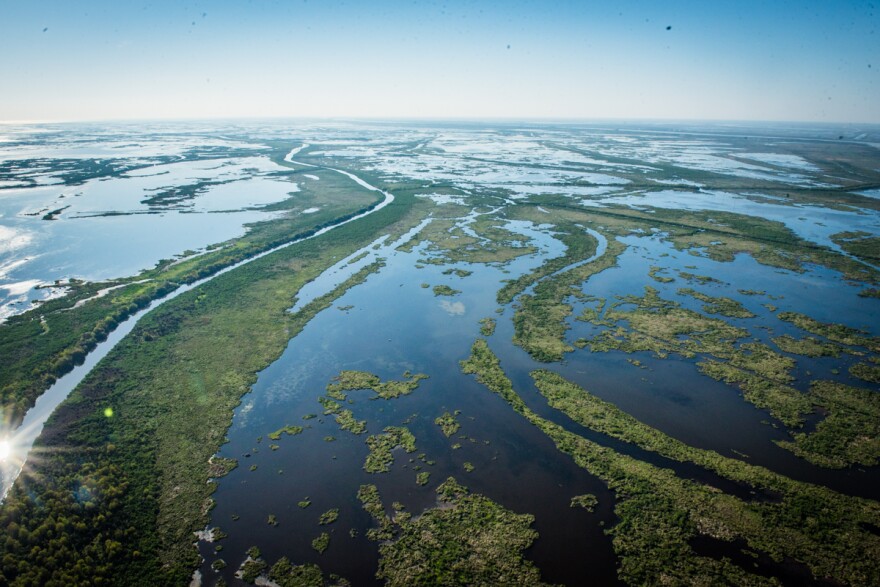Improvements to the federal hurricane protection system mean New Orleans is better prepared for storms than ever before. But just outside the levees, coastal land loss continues to be a threat. To address it experts say officials need to come to terms with what it means to be a coastal city.
Birds chirp as Scott Eustis squints into the sun at what he says is the most valuable land in New Orleans. Eustis is the science director for the Gulf Restoration Network. He’s standing about 25 miles away from the city proper, down the road from the fishing camps perched along Chef Menteur Pass. This is the New Orleans East Land Bridge, a thin strip of land separating Lake Borgne from Lake Pontchartrain.

It’s just outside the levees and seems worlds away from the skyscrapers and busy streets downtown. But experts say this marsh offers critical protection for the rest of the city.
Eustis says the hurricane protection system finished around metro New Orleans after Hurricane Katrina will protect the city, but only to an extent. This part of it, the giant dirt wall in the East, can only stand if the marshy land survives, “If you don’t have wetlands, that daily tide, the daily waves will eat at an earthen levee.”
Like many wetlands in southeast Louisiana, the Land Bridge is disappearing. If nothing is done to protect it, most of it could be underwater in 50 years. A third of Orleans Parish would be gone.
Charles Sutcliffe is the Director of Policy and Programs at the Governor's Office of Coastal Activities and has worked closely with the Coastal Protection and Restoration Authority (CPRA) to decide what land can be saved. Officials acknowledge the need to rebuild the marshes surrounding New Orleans - one of those restoration projects would involve dredging soil from lakes St. Catherine and Pontchartrain to help rebuild and nourish hundreds of acres of brackish wetland. “It’s a massive marsh creation project...it’s a critical area of importance,” says Sutcliffe.
The price tag is $1.5 billion. It’s the biggest restoration project planned for Orleans Parish in the Coastal Master Plan, a blueprint for saving what’s left of Louisiana’s vanishing coast. But there’s not enough money to build it, or enough coordination.

That’s according to Chris Dalbom, the program manager at the Tulane Institute on Water Resources Law and Policy. He says the city, state and coastal parishes need to do a better job of working together to save wetlands all around us. “We can’t separate New Orleans from the rest of the coast, from the rest of the region,” says Dalbom.
More coordination could unlock bigger grants.
"At the end of the day if we don't invest in the coast, if we don't invest in the projects...there frankly is no New Orleans." - Jeff Hebert
Former Chief Resilience Officer for New Orleans, Jeff Hebert, agrees. He says the city must have “a voice at the table.” Because, “At the end of the day if we don’t invest in the coast, if we don’t invest in the projects, if the parish below us is not protected -- there frankly is no New Orleans.”
A city spokeswoman say officials are working on that. For now, they’re looking to rebuild wetlands within the city. They hope to use penalties from the BP oil spill, a separate fund from the state’s pool for similar projects.

First they have to write a plan. Then they’ll get just $8 million spread over 15 years, a pittance compared to the $6 billion the state says it needs for projects in New Orleans. Meantime, the clock is ticking, as the oceans get warmer and more of Louisiana’s coast disappears.
New Orleans: Ready Or Not? is a collaboration with The Lens. Support for the Coastal Desk comes from the Walton Family Foundation, the Greater New Orleans Foundation and the Foundation for Louisiana.




